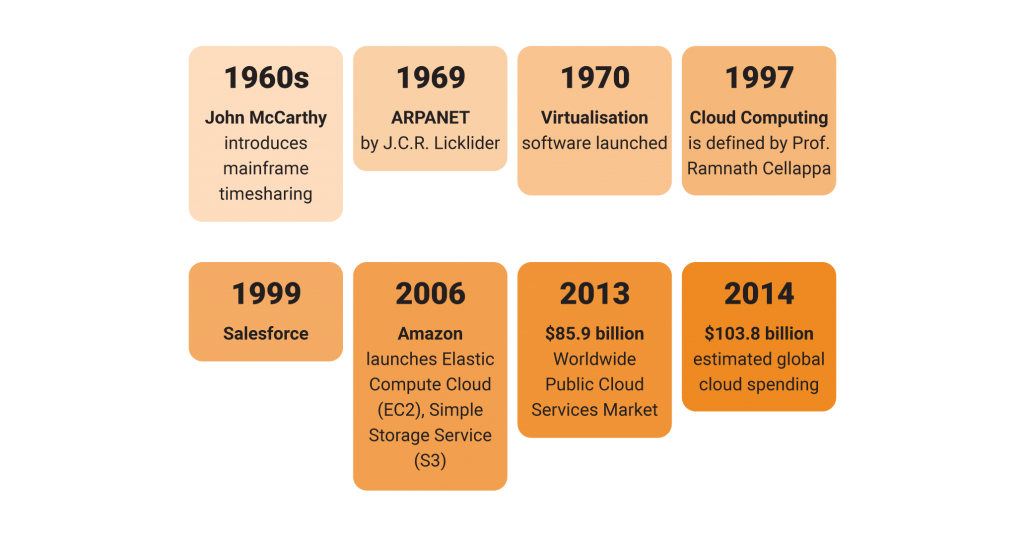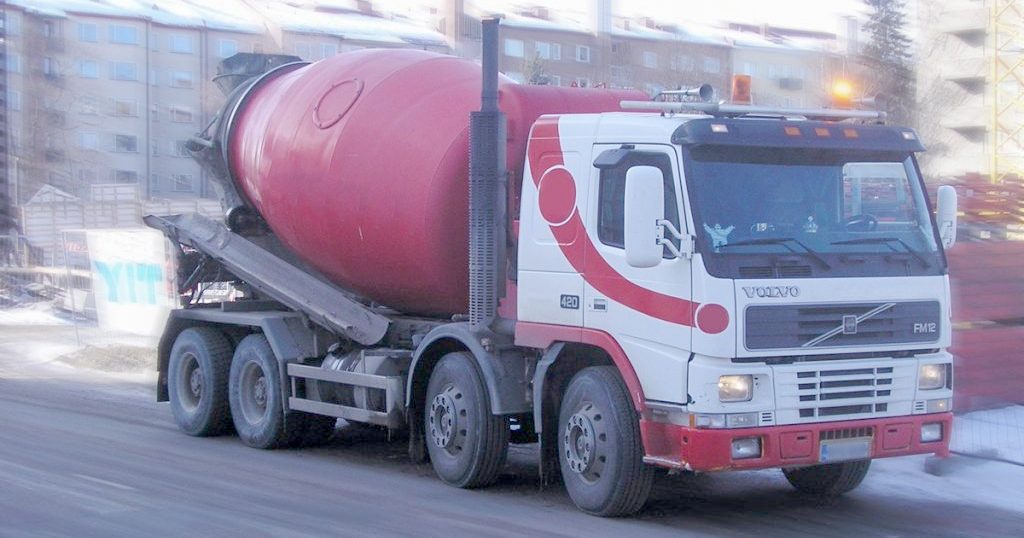A Chronicle of Cloud Computing

EARLY 1960's
The computer scientist John McCarthy, came up with concept of timesharing, and enabling Organization to simultaneously use an expensive mainframe. This computing is described as a significant contribution to the development of the Internet, and a pioneer of Cloud computing.IN 1969
The idea of an “Intergalactic Computer Network” or “Galactic Network” (a computer networking concept similar to today’s Internet) was introduced by J.C.R. Licklider, who was responsible for enabling the development of ARPANET (Advanced Research Projects Agency Network). His vision was for everyone on the globe to be interconnected and being able to access programs and data at any site, from anywhere.IN 1970
Using virtualization software like VMware. It become possible to run more than one Operating System simultaneously in an isolated environment. It was possible to run a completely different Computer (virtual machine) inside a different Operating System.IN 1997
The first known definition of the term “Cloud Computing” seems to be by Prof. Ramnath Chellappa in Dallas in 1997 – “A computing paradigm where the boundaries of computing will be determined by economic rationale rather than technical limits alone.”IN 1999
The arrival of Salesforce.com in 1999 pioneered the concept of delivering enterprise applications via simple website. The services firm covered the way for both specialist and mainstream software firms to deliver applications over the Internet.IN 2003
The first public release of Xen, which creates a Virtual Machine Monitor (VMM) also known as a hypervisor, a software system that allows the execution of multiple virtual guest operating systems simultaneously on a single machine.IN 2006
In 2006, Amazon expanded its cloud services. First was its Elastic Compute cloud (EC2), which allowed people to access computers and run their own applications on them, all on the cloud. Then they brought out Simple Storage Service (S3). This introduced the pay-as-you-go model to both users and the industry as a whole, and it has basically become standard practice now.IN 2013
The Worldwide Public Cloud Services Market totaled £78bn, up 18.5 per cent on 2012, with IaaS (infrastructure-as-a-service) the fastest growing market service.IN 2014
In 2014, global business spending for infrastructure and services related to the cloud will reach an estimated £103.8bn, up 20% from the amount spent in 2013 (Constellation Research).Vision of Cloud Computing
We have seen how far Cloud computing has progressed in the short time since its initiation. Now let’s have a look on what may become of Cloud computing technology in the future. Following are few forecasts of what we might expect in the coming future of Cloud computing:
Following are few forecasts of what we might expect in the coming future of Cloud computing:
- Cloud computing will become even more prominent in the coming years with rapid, continued growth of major global cloud data centers.
- 50% of all IT will be in the cloud within the next 5 – 10 years.
- There will be a greater use of cloud technology as a whole across emerging markets such as in the BRIC countries (Brazil, Russia, India and China) as they continue to develop and progress. The uptake will be particularly evident in Asia where there is already a trend to stay on the edge of the latest technology.
- Data for companies and personal use will be available everywhere in standardized formats, allowing us to easily consume and interact with one another at an even greater level.
- The security and reliability of cloud computing will continue to evolve, ensuring that data will be even more secure with numerous techniques employed.
- We will not even consider ‘cloud’ as the key technology, instead we will focus on the services and applications that it enables.
- Combining cloud technology with the Internet of Things (IOT), Wearables and Bring Your Own Device (BYOD) will become the norm in personal and working lives, so much so that the presence of cloud technology as an enabler will be overlooked. An estimated 50% of organizations will require employees to use their own devices by 2017.
- The total global cloud computing spend will reach $241 Billion in 2020.
Link to original article
Geotab Announces New OEM Integrations: Volvo Truck, Mack Truck and John Deere
Geotab® is pleased to announce the launch of three OEM integrations available exclusively in the USA: Volvo Trucks, Mack Trucks and John Deere.

Volvo & Mack Trucks
Geotab has partnered with both Volvo Trucks and Mack Trucks to provide an integrated Electronic Logging Device (ELD) solution for all Volvo-powered heavy-duty trucks, model-year 2015 and newer; and all Mack-powered Trucks, model-year 2015 and newer.
The factory-installed telematics device means no external hardware or specialized installation is required. Together with the Geotab Drive App, the integrated solution provides an easy way to monitor compliance with Federal Motor Carrier Safety Administration (FMCSA) regulations by sending engine and positional data to the cloud, which drivers use to record:
• Hours of Service (HOS)
• Records of Duty Status (RODS)
• Driver Vehicle Inspection Reports (DVIR)
John Deere
Geotab also recently partnered with John Deere to extract AEMP 2.0 data from John Deere’s factory-installed telematics solution so it can be displayed in the MyGeotab platform.
This integrated solution helps to provide fleets operating John Deere vehicles with visibility into their workforce, assets and costs in a single platform, to promote understanding of fuel usage, idling trends, engine hours and PTO usage.

